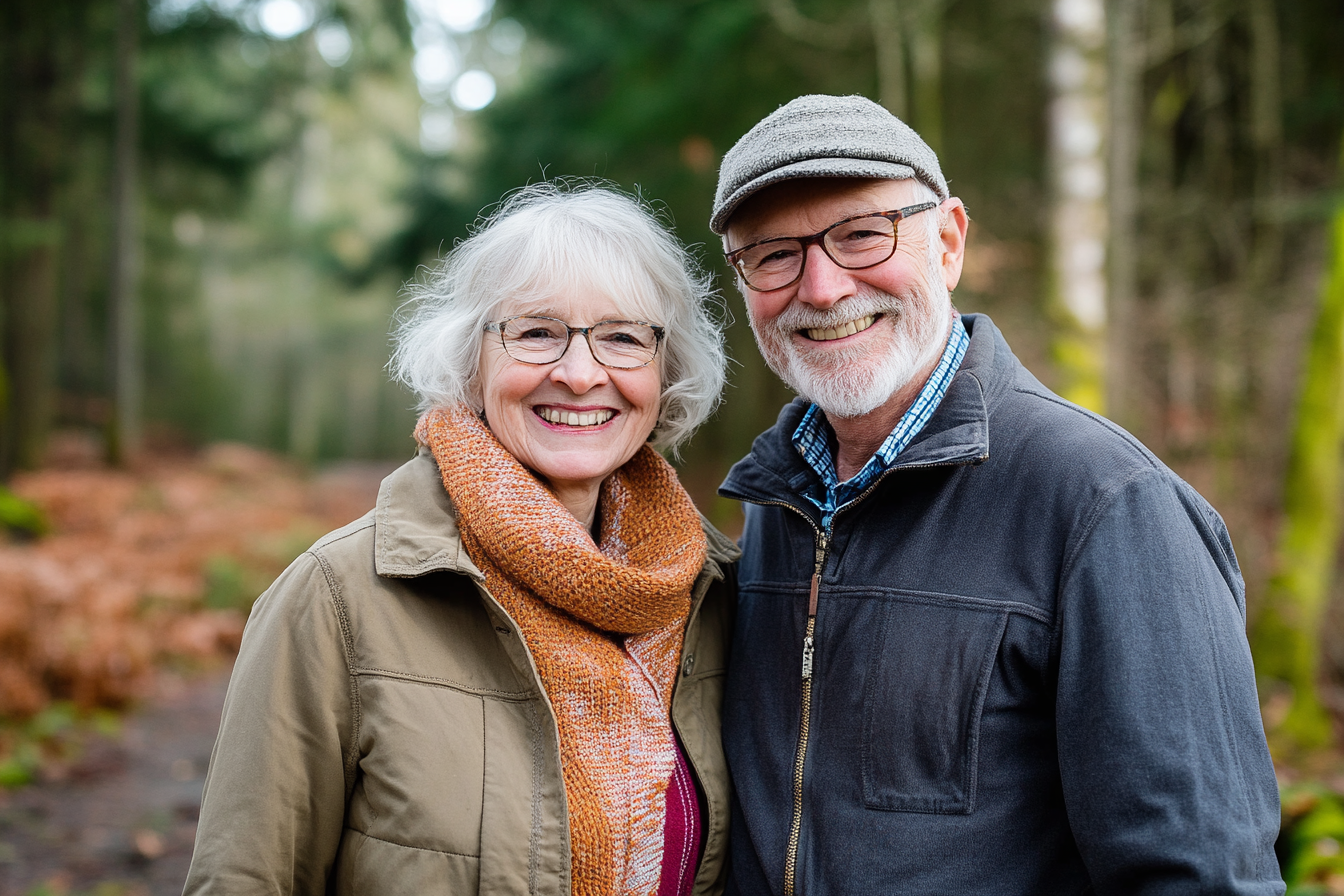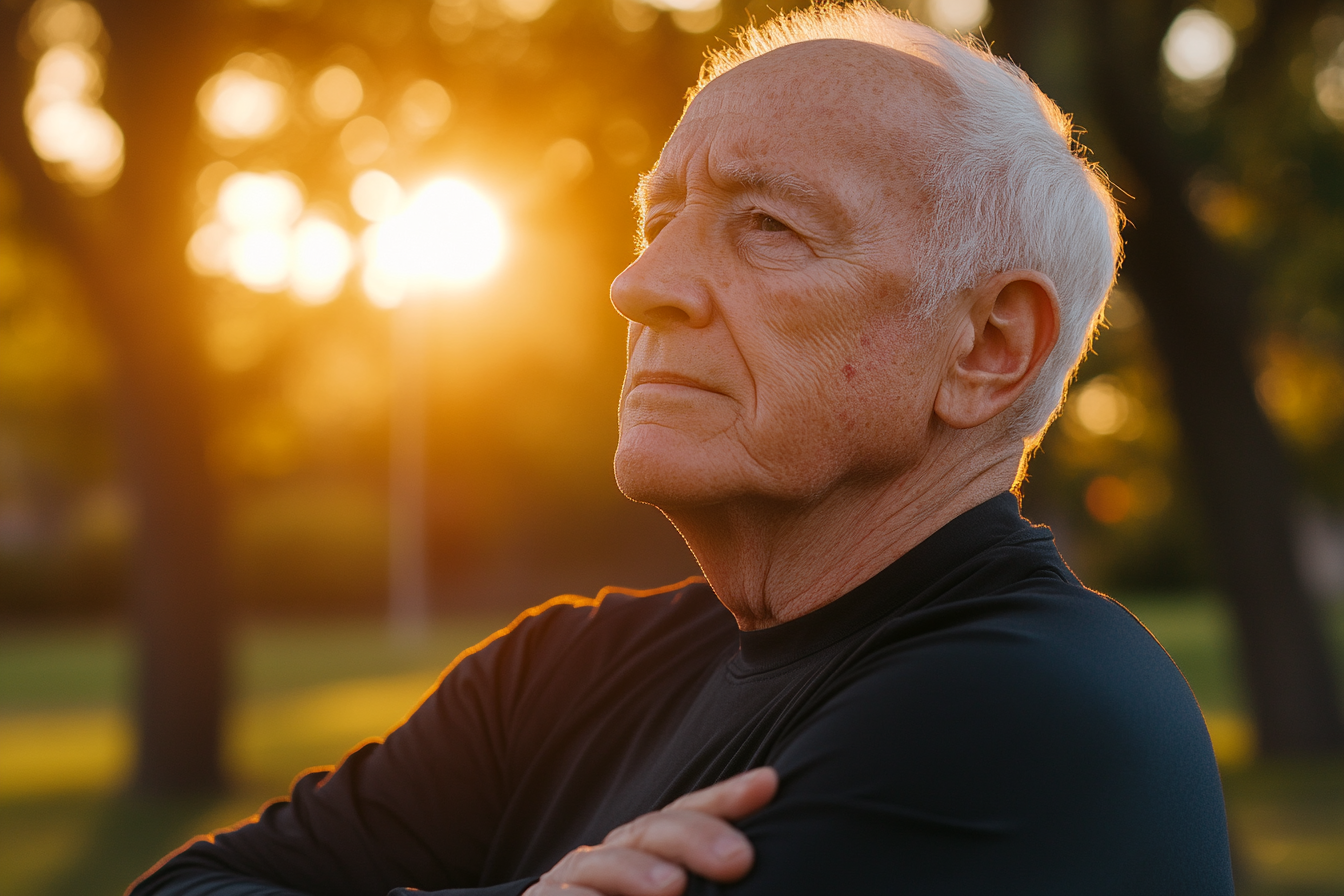From Challenges to Comfort: Palliative Care for Dementia Patients
Practical ways palliative care makes life more comfortable for dementia patients, addressing their physical and emotional needs with care.
This list of 100 questions and answers breaks down the mysteries of aging, offering practical advice and science-backed insights for living your best life, no matter your age.

Aging is one of those things we all think about, whether it’s in passing—“Why does my back ache now?”—or with a deeper sense of curiosity. It’s full of surprises, some delightful, others...less so. But at its core, aging is more than just getting older. It’s about how we change, adapt, and, yes, thrive as time goes on.
And let’s be honest: aging raises a lot of questions. Some are practical, like “How do I keep my body strong?” or “What’s the deal with these reading glasses?” Others are more thoughtful: “How do I stay connected to what matters?” or “Why do we seem to get wiser with age—or do we?”
In this list of 100 questions and answers, we’ll tackle everything from the small stuff to the big picture. What happens to our muscles as we age? How do we keep our brains sharp? Is it possible to actually enjoy getting older? Think of this as the FAQ of life’s later stages. No jargon, no fluff—just straightforward, helpful insights into what aging really looks like and how to make the most of it.
Because while aging may be inevitable, how we face it is where the real story begins. And if there’s one thing we know, it’s that the story is always worth digging into.
1. What is the natural process called by which our bodies change over time, leading to physical signs like wrinkles and gray hair?
Answer: Aging. Aging is the gradual process of physical, mental, and social changes that occur throughout life. It involves the accumulation of various changes in cells and tissues, resulting in physical signs like wrinkles, gray hair, and decreased bodily functions.
2. Around what age do most people begin to experience presbyopia, the difficulty in focusing on close objects?
Answer: Around age 40. Presbyopia typically starts in the early to mid-40s when the eye's lens loses flexibility, making it harder to focus on nearby objects, which is why many people begin using reading glasses at this age.
3. Which vitamin is crucial for calcium absorption and is often recommended for older adults to support bone health?
Answer: Vitamin D. Vitamin D helps the body absorb calcium from the diet, which is essential for maintaining strong bones. As people age, their skin becomes less efficient at producing vitamin D from sunlight, so supplements may be necessary.
4. What is the most common form of arthritis in older adults that results from the wear and tear of joint cartilage?
Answer: Osteoarthritis. Osteoarthritis is a degenerative joint disease characterized by the breakdown of cartilage, leading to pain, stiffness, and reduced mobility in affected joints, commonly in the knees, hips, and hands.
5. What neurological disorder is the leading cause of dementia in older adults, marked by memory loss and cognitive decline?
Answer: Alzheimer's disease. Alzheimer's disease is a progressive brain disorder that destroys memory and thinking skills over time due to the buildup of amyloid plaques and tau tangles in the brain.
6. What is presbycusis, and how can it affect communication in older adults?
Answer: Age-related hearing loss affecting high-frequency sounds. Presbycusis is the gradual loss of hearing that occurs as people age, particularly affecting the ability to hear high-pitched sounds like speech consonants. This can make conversations difficult to follow, especially in noisy environments, potentially leading to social isolation. Hearing aids and assistive devices can improve hearing and communication.
7. Which habit is known to accelerate the aging process and increase the risk of age-related diseases like heart disease and cancer?
Answer: Smoking. Smoking introduces harmful chemicals into the body that cause oxidative stress and damage to cells, accelerating aging and increasing the risk of various chronic diseases.
8. What is the name of the condition involving the loss of muscle mass and strength that commonly occurs with aging?
Answer: Sarcopenia. Sarcopenia is the age-related decline in muscle mass and function, which can lead to weakness, reduced stamina, and decreased physical activity, impacting overall health and independence.
9. Which eye condition, common in the elderly, causes clouding of the lens and can lead to vision impairment or blindness if untreated?
Answer: Cataracts. Cataracts occur when proteins in the eye's lens clump together, creating cloudy areas that interfere with vision. They are treatable with surgery to replace the clouded lens with an artificial one.
10. What bone disease increases the risk of fractures in older adults due to decreased bone density and strength?
Answer: Osteoporosis. Osteoporosis is characterized by porous and fragile bones, resulting from the loss of bone mass and mineral density, making bones more susceptible to breaks from falls or minor stresses.

11. During menopause, women experience a significant drop in which hormone, leading to symptoms like hot flashes and increased risk of osteoporosis?
Answer: Estrogen. Estrogen levels decline during menopause, affecting various body systems. Lower estrogen contributes to bone density loss, increasing the risk of osteoporosis, and causes other symptoms like hot flashes and mood changes.
12. What type of physical activity is especially beneficial for older adults to maintain bone density and prevent muscle loss?
Answer: Weight-bearing exercises. Activities such as walking, jogging, dancing, and resistance training help strengthen bones and muscles by forcing the body to work against gravity, which stimulates bone formation and muscle maintenance.
13. Which substances found in colorful fruits and vegetables help protect cells from damage and may slow aspects of aging?
Answer: Antioxidants. Antioxidants like vitamins C and E, beta-carotene, and flavonoids neutralize free radicals—unstable molecules that can damage cells—thereby reducing oxidative stress and potentially slowing aging and disease progression.
14. What is the term for age-related vision changes that affect the ability to see colors vividly, often making blues and greens harder to distinguish?
Answer: Color vision deficiency. As the eye's lens yellows with age, it can alter color perception, particularly affecting the ability to distinguish between shades of blue and green.
15. Which chronic condition characterized by high blood sugar becomes more common with age due to factors like decreased insulin sensitivity?
Answer: Type 2 diabetes. Aging can lead to increased insulin resistance and decreased insulin production, contributing to higher blood glucose levels and a greater risk of developing type 2 diabetes.
16. What sleep disorder involving interrupted breathing is more prevalent in older adults and can lead to serious health issues if left untreated?
Answer: Sleep apnea. Obstructive sleep apnea causes breathing to stop and start repeatedly during sleep, leading to poor sleep quality, daytime fatigue, and increased risk of cardiovascular problems.
17. Which component of the immune system declines with age, reducing the body's ability to fight off new infections and respond to vaccines?
Answer: T-cell function. Aging affects the thymus gland, where T-cells mature, resulting in fewer new T-cells and a weaker immune response, a phenomenon known as immunosenescence.
18. How does aging affect the body's thermoregulation, and what risks does this pose for older adults?
Answer: Impaired ability to regulate temperature increases risk of hypothermia and heat stroke. Older adults have a decreased ability to sweat and may not feel temperature extremes as acutely. This makes them more susceptible to hypothermia in cold environments and heat stroke in hot conditions. Dressing appropriately and monitoring indoor temperatures can help mitigate these risks.
19. Which mental health condition, involving persistent feelings of sadness and loss of interest, is common among older adults but often overlooked?
Answer: Depression. Depression in older adults may be mistaken for normal aging, but it is a treatable medical condition that can significantly impact quality of life and physical health if not addressed.
20. What is the name of the legal document that allows individuals to outline their healthcare preferences in case they become incapable of making decisions?
Answer: An advance directive (or living will). An advance directive specifies a person's wishes regarding medical treatments and interventions, ensuring their preferences are respected when they cannot communicate them themselves.

21. What is the primary cause of wrinkles and loss of skin elasticity as people age?
Answer: Decreased production of collagen and elastin. Collagen provides structure and strength to the skin, while elastin gives it elasticity. As we age, the body's production of these proteins decreases, leading to thinner skin, wrinkles, and sagging.
22. Which age-related condition affects the eyes by causing the gradual loss of central vision due to damage to the macula?
Answer: Age-related Macular Degeneration (AMD). AMD damages the macula, the part of the retina responsible for sharp central vision needed for activities like reading and driving, leading to blurred or no central vision.
23. What is the term for the legal responsibility held by adult children to care for their aging parents in some cultures and legal systems?
Answer: Filial responsibility. Filial responsibility refers to the duty that adult children have to support their elderly parents emotionally, financially, and physically. In some countries, filial responsibility laws legally obligate adult children to care for their aging parents, ensuring that the elderly receive necessary support when they can no longer care for themselves.
24. Which organ's function declines with age, leading to reduced filtration of waste products from the blood?
Answer: The kidneys. Aging can reduce kidney size and function, decreasing their ability to filter blood efficiently, which can lead to a buildup of waste products and affect medication processing.
25. What digestive condition becomes more common with age due to a decrease in stomach acid production?
Answer: Atrophic gastritis. This condition involves chronic inflammation of the stomach lining, leading to decreased stomach acid and intrinsic factor production, which can result in vitamin B12 deficiency.
26. What are "Blue Zones," and what common lifestyle factors contribute to longevity in these regions?
Answer: Areas with high life expectancy; factors include diet, activity, and social engagement. Blue Zones are regions where people live significantly longer, healthier lives. Common factors among these populations include plant-based diets rich in whole foods, regular physical activity, strong social and family ties, and stress reduction practices. Studying these communities provides insights into healthy aging strategies.
27. Which cognitive function, important for vocabulary and knowledge accumulated over a lifetime, typically remains stable or even improves with age?
Answer: Crystallized intelligence. This refers to the use of learned knowledge and experience, which often remains intact or improves as people age, aiding in tasks that rely on language and long-term memory.
28. What is the term for the age-related decline in the ability to taste and smell, which can affect appetite and nutrition?
Answer: Sensory impairment (hypogeusia and hyposmia). Hypogeusia is reduced taste sensitivity, and hyposmia is reduced smell sensitivity. These changes can lead to decreased enjoyment of food and poor nutritional intake.
29. Which hormone decreases in men as they age, potentially leading to reduced muscle mass, energy levels, and libido?
Answer: Testosterone. Age-related decline in testosterone levels, sometimes called andropause, can affect physical strength, mood, and sexual function in men.
30. What common cardiovascular change occurs with aging that increases the risk of heart disease and stroke?
Answer: Atherosclerosis (hardening of the arteries). Fatty deposits build up in the arterial walls over time, causing them to stiffen and narrow, which can lead to high blood pressure, heart attacks, and strokes.

31. What is the effect of aging on the body's metabolic rate, and how can this impact weight management?
Answer: Metabolic rate slows down. A decrease in muscle mass and hormonal changes lead to a slower metabolism, meaning the body burns fewer calories at rest, which can contribute to weight gain if calorie intake isn't adjusted.
32. Which sleep pattern change is commonly experienced by older adults, often leading to daytime fatigue?
Answer: Difficulty staying asleep or fragmented sleep. Older adults may wake up more frequently during the night and have shorter periods of deep sleep, leading to less restorative sleep overall.
33. What is the term for the age-related loss of bladder control, resulting in involuntary leakage of urine?
Answer: Urinary incontinence. This condition can be caused by weakened pelvic muscles, nerve damage, or certain medications, and is more common as people age.
34. Which type of physical activity is particularly beneficial for maintaining flexibility and balance in older adults?
Answer: Yoga and tai chi. These activities improve flexibility, balance, and muscle strength, reducing the risk of falls and improving overall mobility.
35. What psychological benefit does social interaction provide to older adults, potentially impacting longevity?
Answer: Improved mental health and reduced risk of depression. Regular social engagement can enhance mood, provide a sense of purpose, and contribute to better cognitive function, all of which can positively affect lifespan.
36. What is the impact of aging on the production of digestive enzymes, and how might this affect nutrition?
Answer: Reduced production of digestive enzymes. This can lead to difficulties in digesting food, particularly proteins and fats, potentially resulting in malnutrition or gastrointestinal discomfort.
37. Why is vitamin D deficiency common in older adults, and what health issues can it cause?
Answer: Reduced skin synthesis and dietary intake lead to deficiency, causing bone problems. Aging skin is less efficient at producing vitamin D from sunlight. Additionally, older adults may consume less vitamin D-rich foods. A deficiency can lead to weakened bones, increasing the risk of fractures and osteoporosis. Vitamin D is also important for immune function and muscle health.
38. What role does fiber play in the diet of older adults, and why is it important?
Answer: Promotes digestive health and prevents constipation. Dietary fiber adds bulk to stool and helps maintain regular bowel movements, which is important as digestive transit can slow with age.
39. How does aging affect the body's ability to regulate body temperature, and what risks does this pose?
Answer: Reduced ability to regulate temperature. Older adults may not sense temperature changes as well and may sweat less, increasing the risk of hypothermia in cold environments and heat stroke in hot environments.
40. What is the term for the thickening and stiffening of heart valves that can occur with aging, potentially leading to heart murmurs or reduced cardiac function?
Answer: Valvular heart disease (specifically, aortic stenosis). Calcium deposits and fibrosis can cause heart valves to thicken and lose flexibility, affecting blood flow and increasing the workload on the heart.

41. What is the most common type of cancer among men over the age of 65, affecting the gland responsible for producing seminal fluid?
Answer: Prostate cancer. Prostate cancer develops in the prostate gland, which is part of the male reproductive system. It is the most frequently diagnosed cancer in older men and can often be detected early through screening tests like the PSA (prostate-specific antigen) test.
42. Which vitamin deficiency, common in older adults due to decreased absorption, can lead to anemia and neurological issues like numbness and balance problems?
Answer: Vitamin B12 deficiency. As people age, their ability to absorb vitamin B12 from food diminishes due to decreased stomach acid production. A deficiency can cause pernicious anemia and neurological symptoms, emphasizing the importance of adequate B12 intake through diet or supplements.
43. What condition involves the gradual weakening of the bladder muscles, leading to involuntary leakage of urine in older adults?
Answer: Urinary incontinence. Urinary incontinence can result from age-related changes in bladder capacity and muscle strength, leading to stress incontinence (leakage during activities like coughing) or urge incontinence (sudden, intense urges to urinate).
44. Which chronic lung disease, often caused by long-term smoking, is characterized by difficulty breathing and reduced airflow, particularly affecting older adults?
Answer: Chronic Obstructive Pulmonary Disease (COPD). COPD encompasses conditions like emphysema and chronic bronchitis. It leads to obstructed airflow from the lungs, causing symptoms such as shortness of breath, wheezing, and chronic cough.
45. What is the Mediterranean diet, and how does it promote healthy aging?
Answer: A diet rich in fruits, vegetables, whole grains, and healthy fats linked to longevity. The Mediterranean diet emphasizes plant-based foods, olive oil, fish, and moderate red wine consumption, with limited red meat and processed foods. It's associated with reduced risks of heart disease, certain cancers, and cognitive decline, contributing to healthier aging.
46. Which vaccine is recommended annually for older adults to protect against a contagious respiratory illness that can be severe in this age group?
Answer: The influenza (flu) vaccine. Older adults are at higher risk for serious complications from the flu, such as pneumonia. Annual vaccination helps protect them and reduces the spread of the virus.
47. How can older adults reduce their risk of falls within their homes?
Answer: By improving home safety and maintaining physical fitness. Removing tripping hazards, installing grab bars, ensuring good lighting, and using non-slip mats can make the home safer. Regular exercise enhances strength and balance. Reviewing medications for side effects like dizziness can also help prevent falls.
48. What age-related change in blood vessels contributes to increased blood pressure, making hypertension more common in older adults?
Answer: Arterial stiffening. As arteries lose elasticity with age, they become stiffer, causing the heart to work harder to pump blood through them. This leads to higher blood pressure, or hypertension.
49. How does aging affect thyroid function, and what symptoms might indicate hypothyroidism in older adults?
Answer: Reduced hormone production leads to hypothyroidism, causing fatigue and weight gain. The thyroid gland may produce fewer hormones with age, slowing metabolism. Symptoms of hypothyroidism include tiredness, weight gain, cold intolerance, dry skin, and depression. Blood tests can diagnose the condition, and treatment typically involves thyroid hormone replacement therapy.
50. What is the term for the legal document in which a person appoints someone to make healthcare decisions on their behalf if they become incapacitated?
Answer: Healthcare power of attorney (or medical proxy). This document designates a trusted individual to make medical decisions if the person is unable to do so, ensuring their healthcare preferences are honored.

51. Which nutrient is essential for maintaining muscle mass in older adults, and may require increased intake due to decreased absorption and appetite?
Answer: Protein. Adequate protein intake supports muscle repair and maintenance, helping to prevent sarcopenia (muscle loss). Older adults may need to focus on consuming high-quality protein sources in their diet.
52. What is the practice of engaging in activities like puzzles, reading, or learning new skills to help maintain cognitive function in aging individuals?
Answer: Mental stimulation (or cognitive engagement). Keeping the brain active through challenging activities can enhance neural connections, potentially slowing cognitive decline and improving memory.
53. Which eye condition associated with aging involves increased pressure in the eye and can lead to vision loss if untreated?
Answer: Glaucoma. Glaucoma damages the optic nerve due to high intraocular pressure. Regular eye exams can detect it early, and treatments are available to manage pressure and prevent vision loss.
54. What is the age-related decrease in the sense of thirst, which can lead to dehydration if older adults do not consciously drink enough fluids?
Answer: Reduced thirst sensation. Older adults may not feel thirsty even when their bodies need water, increasing the risk of dehydration. It's important for them to drink fluids regularly, even without feeling thirsty.
55. Which social determinant has been shown to have a significant impact on the health and longevity of older adults, involving connections with family, friends, and community?
Answer: Social support and engagement. Strong social networks contribute to better mental and physical health outcomes, lower rates of depression, and increased longevity by providing emotional support and encouraging healthy behaviors.
56. What is the term for the age-related decline in the immune system's function, making older adults more susceptible to infections and diseases?
Answer: Immunosenescence. This decline affects the body's ability to respond to new antigens, making vaccinations less effective and increasing vulnerability to illnesses like influenza and pneumonia.
57. Which practice involving physical postures, breathing techniques, and meditation can improve flexibility, balance, and mental well-being in older adults?
Answer: Yoga. Yoga offers gentle exercises that enhance physical strength, balance, and flexibility, while also promoting relaxation and stress reduction, benefiting both physical and mental health.
58. What is the age-related condition where the thyroid gland becomes underactive, leading to symptoms like fatigue, weight gain, and sensitivity to cold?
Answer: Hypothyroidism. Hypothyroidism results from decreased production of thyroid hormones, slowing metabolism. It's more common in older adults, particularly women, and can be managed with medication.
59. Why is balance training important for older adults, and what exercises can improve balance?
Answer: Enhances stability, reducing fall risk; exercises include tai chi and yoga. Aging can affect balance due to muscle weakness and sensory changes. Balance training strengthens muscles and improves coordination. Activities like tai chi, yoga, and specific balance exercises help prevent falls, which are a leading cause of injury among older adults.
60. Which law in the United States prohibits employment discrimination against individuals 40 years of age or older?
Answer: The Age Discrimination in Employment Act (ADEA). Enacted in 1967, the ADEA protects workers and job applicants from age-based discrimination in hiring, promotion, discharge, compensation, or terms of employment.

61. What is the term for the age-related condition characterized by a general decline in physical strength and increased vulnerability to stressors?
Answer: Frailty syndrome. Frailty is a geriatric condition marked by decreased strength, endurance, and physiological function, making older adults more susceptible to falls, hospitalization, and disability. It involves multiple body systems and can be mitigated with proper nutrition and physical activity.
62. Which brain disorder common in older adults is characterized by tremors, stiffness, and difficulty with balance and coordination?
Answer: Parkinson's disease. Parkinson's disease is a progressive neurological disorder resulting from the loss of dopamine-producing brain cells. Symptoms include tremors, muscle rigidity, slowed movement, and impaired posture and balance. While there's no cure, medications and therapies can manage symptoms.
63. What is the term for chronic, low-grade inflammation associated with aging that contributes to many age-related diseases?
Answer: Inflammaging. Inflammaging refers to the persistent, systemic inflammation that occurs with age. It's linked to conditions like atherosclerosis, diabetes, and Alzheimer's disease. Anti-inflammatory diets and lifestyles may help reduce its effects.
64. What is polypharmacy, and why is it a concern for the elderly population?
Answer: Polypharmacy is the concurrent use of multiple medications by a patient. In older adults, it raises the risk of adverse drug interactions, side effects, and complications like falls or cognitive impairment. Careful medication management is essential to minimize risks.
65. Which essential mineral important for bone health is often deficient in older adults, increasing the risk of fractures?
Answer: Calcium. Calcium is crucial for maintaining strong bones. As people age, calcium absorption decreases, and inadequate intake can lead to osteoporosis. Older adults are advised to consume calcium-rich foods or supplements as recommended by a healthcare provider.
66. What is the effect of aging on the sense of taste and smell, and how can this impact nutrition?
Answer: Diminished taste and smell (hypogeusia and hyposmia). Age-related sensory decline can make food less appealing, leading to decreased appetite and potential nutritional deficiencies. Enhancing food flavors and focusing on nutrient-dense meals can help maintain proper nutrition.
67. How does the skin's ability to repair itself change with age, and what factors contribute to this?
Answer: Skin healing slows down due to reduced collagen production and decreased cell turnover. Aging skin becomes thinner and less elastic, making it more prone to injuries and slower to heal. Protecting skin from damage and maintaining hydration can support skin health.
68. What impact does reduced melatonin production have on older adults' sleep patterns?
Answer: It can lead to sleep disturbances like insomnia. Melatonin regulates sleep-wake cycles, and decreased levels in older adults may cause difficulty falling asleep or staying asleep. Good sleep hygiene and, in some cases, melatonin supplements can improve sleep quality.
69. How can lifelong learning and mental activities affect cognitive health in older adults?
Answer: They enhance brain function and may delay cognitive decline. Engaging in activities like reading, puzzles, learning new skills, or playing musical instruments stimulates neural pathways, improving memory and cognitive reserve. This mental stimulation can help maintain cognitive abilities and reduce the risk of dementia.
70. How does regular physical activity benefit cognitive function in older adults?
Answer: It enhances brain health by improving blood flow and stimulating neural connections. Exercise can delay cognitive decline, reduce the risk of dementia, and improve memory and executive functions. Activities like walking, swimming, and aerobics are beneficial.

71. What role does chronic stress play in the aging process, particularly concerning cortisol levels?
Answer: Chronic stress elevates cortisol, accelerating aging and increasing disease risk. Prolonged high cortisol levels can impair immune function, increase blood pressure, and contribute to cognitive decline. Stress management techniques like meditation and exercise can mitigate these effects.
72. What is the name of the eye condition where reduced tear production leads to dryness and irritation in older adults?
Answer: Dry eye syndrome. This condition occurs when the eyes don't produce enough tears or the right quality of tears, causing discomfort and vision problems. Treatments include artificial tears and medications to increase tear production.
73. Why is vitamin D important for older adults, and how does aging affect its levels?
Answer: Vitamin D is essential for bone health, but aging skin synthesizes less of it from sunlight. Lower vitamin D levels can lead to osteoporosis and fractures. Supplements and fortified foods can help maintain adequate levels.
74. What is dynapenia, and how does it differ from sarcopenia?
Answer: Dynapenia is the loss of muscle strength not necessarily accompanied by muscle mass loss. While sarcopenia refers to muscle mass decline, dynapenia focuses on strength reduction, affecting mobility and increasing fall risk. Resistance training can help improve strength.
75. What common digestive issue increases with age due to slower intestinal movement, and how can it be alleviated?
Answer: Constipation. Reduced physical activity and changes in diet can slow digestion. Increasing fiber intake, staying hydrated, and regular exercise can help prevent constipation.
76. How does a decreased sense of thirst in older adults impact their health?
Answer: It increases the risk of dehydration. Older adults may not feel thirsty even when their body needs fluids, leading to dehydration, which can cause confusion, urinary tract infections, and kidney problems. Regular fluid intake is essential.
77. What changes occur in the cardiovascular system with age that affect exercise capacity?
Answer: Reduced maximum heart rate and arterial stiffness decrease aerobic capacity. The heart pumps less efficiently, and blood vessels become less flexible, limiting oxygen delivery during activity. Tailored, moderate exercise can improve heart health.
78. What role does chronic stress play in the aging process, and what are effective stress management techniques for older adults?
Answer: Chronic stress accelerates aging by increasing cortisol levels, leading to health issues. Elevated cortisol can impair immune function, increase blood pressure, and contribute to cognitive decline. Effective stress management techniques include mindfulness meditation, deep-breathing exercises, yoga, engaging in hobbies, maintaining social connections, and regular physical activity to reduce stress levels.
79. How do antioxidants benefit older adults, and which foods are rich in them?
Answer: They combat oxidative stress, slowing cellular aging. Antioxidants neutralize free radicals, reducing damage to cells. Foods like berries, dark leafy greens, nuts, and dark chocolate are high in antioxidants.
80. What is osteopenia, and what steps can older adults take to prevent its progression to osteoporosis?
Answer: Osteopenia is reduced bone density that's less severe than osteoporosis. To prevent progression, older adults should ensure adequate calcium and vitamin D intake, engage in weight-bearing exercises, avoid smoking, and limit alcohol consumption.

81. What is the condition called where older adults experience a sudden drop in blood pressure upon standing, leading to dizziness or fainting?
Answer: Orthostatic hypotension. This condition occurs when the body's ability to regulate blood pressure is slowed, causing a drop in blood pressure when moving from sitting or lying down to standing. It can lead to dizziness, lightheadedness, or even fainting, increasing the risk of falls. Staying hydrated, rising slowly, and wearing compression stockings can help manage symptoms.
82. How does aging affect the body's ability to process medications, and what organ is primarily responsible for this change?
Answer: Reduced kidney and liver function slows medication metabolism. As people age, kidney and liver efficiency declines, affecting how drugs are processed and eliminated from the body. This can lead to medications staying in the system longer, increasing the risk of side effects or toxicity. Healthcare providers may adjust dosages for older adults to account for these changes.
83. What is the term for the age-related decline in the number of taste buds, affecting how older adults perceive flavors?
Answer: Taste bud atrophy. With age, the number of taste buds decreases, and those that remain may shrink or become less sensitive. This can alter the perception of sweet, salty, sour, and bitter tastes, potentially reducing appetite and enjoyment of food. Enhancing meals with herbs and spices can help compensate for this decline.
84. Why are older adults more susceptible to hypothermia, and what factors contribute to this increased risk?
Answer: Decreased metabolic rate and reduced subcutaneous fat lead to lower body temperature regulation. Aging bodies produce less heat and have thinner layers of fat under the skin, making it harder to stay warm. Additionally, medical conditions and certain medications can impair the body's ability to respond to cold. Dressing warmly and keeping indoor temperatures adequate are important preventive measures.
85. What role does regular strength training play in preventing falls among the elderly?
Answer: It improves muscle strength, balance, and coordination. Strength training helps maintain and build muscle mass, enhancing stability and reducing the risk of falls. Exercises targeting the legs and core are particularly beneficial. Incorporating balance exercises like standing on one foot can also improve proprioception.
86. How does aging affect the absorption of vitamin B12, and what condition can this lead to if not addressed?
Answer: Decreased stomach acid impairs B12 absorption, leading to pernicious anemia. Older adults produce less gastric acid, which is necessary for separating B12 from food proteins. A deficiency in vitamin B12 can cause symptoms like fatigue, weakness, constipation, loss of appetite, and nerve problems. Supplements or fortified foods can help maintain adequate levels.
87. What is the age-related eye condition that reduces peripheral vision, making activities like driving more challenging for older adults?
Answer: Glaucoma. Glaucoma damages the optic nerve, often due to increased pressure in the eye. This damage can lead to tunnel vision, where peripheral (side) vision is lost while central vision remains. Regular eye exams can detect glaucoma early, and treatments can slow its progression.
88. Why is hydration particularly important for older adults during hot weather, and what factors make them more prone to dehydration?
Answer: Reduced thirst sensation and decreased kidney function increase dehydration risk. Older adults may not feel thirsty even when their body needs fluids. The kidneys also become less efficient at conserving water. In hot weather, increased fluid loss through sweating can exacerbate dehydration. Regularly drinking water and avoiding excessive heat exposure are important preventive steps.
89. What cognitive changes are considered a normal part of aging, and how do they differ from dementia?
Answer: Mild forgetfulness and slower information processing are normal; significant memory loss is not. Normal aging may involve occasional lapses in memory or slower recall, but individuals can still function independently. Dementia involves severe cognitive decline that interferes with daily life, such as forgetting familiar people or places, difficulty performing routine tasks, and impaired judgment.
90. How does age affect the skin's ability to produce vitamin D from sunlight, and what implications does this have for bone health?
Answer: Reduced skin efficiency lowers vitamin D synthesis, increasing osteoporosis risk. The skin's capacity to produce vitamin D decreases with age, potentially leading to deficiencies. Vitamin D is essential for calcium absorption and bone health. Older adults may need supplements or dietary sources to maintain adequate levels and support bone strength.
91. What is the effect of aging on reflexes and reaction time, and how can this impact daily activities?
Answer: Slower reflexes and reaction times can affect driving and fall avoidance. Neural pathways may transmit signals more slowly, making it take longer to respond to stimuli. This delay can impact the ability to react quickly in situations like braking while driving or catching oneself during a trip, increasing accident risks.
92. Why might older adults experience a change in body composition, such as increased fat mass despite stable weight?
Answer: Decreased muscle mass and increased fat deposition occur with age. Even without weight gain, aging can lead to sarcopenia (muscle loss) and a relative increase in body fat. This change can affect metabolism, insulin sensitivity, and overall health. Regular exercise, including resistance training, can help preserve muscle mass.
93. What role does cholesterol play in aging, and how do lipid levels typically change as people get older?
Answer: LDL cholesterol levels may increase, raising cardiovascular disease risk. Aging can lead to higher levels of low-density lipoprotein (LDL) cholesterol ("bad" cholesterol) and lower levels of high-density lipoprotein (HDL) cholesterol ("good" cholesterol). Managing diet, exercising, and medications can help control cholesterol levels.
94. How does the loss of subcutaneous fat with aging affect an older adult's appearance and vulnerability to injury?
Answer: It leads to thinner skin and increased bruising. Reduced fat under the skin makes blood vessels more fragile and the skin more translucent, so minor bumps can cause bruises. Protecting the skin and gentle handling can help prevent injury.
95. What impact does aging have on the digestive system's motility, and what common gastrointestinal issue can this cause?
Answer: Slower gastrointestinal motility can lead to constipation. The muscles in the digestive tract may weaken, and peristalsis (the wave-like movements that push food through the intestines) slows down. Increasing dietary fiber, staying hydrated, and regular physical activity can alleviate constipation.
96. Why are older adults at a higher risk for developing urinary tract infections (UTIs), and what symptoms might they exhibit?
Answer: Weakened immune systems and incomplete bladder emptying increase UTI risk. Age-related changes can lead to residual urine in the bladder, creating an environment for bacteria to grow. Symptoms may include confusion, agitation, or behavioral changes rather than typical signs like pain or fever. Prompt medical attention is important.
97. How does aging affect the body's inflammatory response, and what implications does this have for disease development?
Answer: Chronic low-level inflammation (inflammaging) contributes to age-related diseases. The immune system's regulation changes, leading to persistent inflammation that can promote conditions like atherosclerosis, diabetes, and Alzheimer's disease. Anti-inflammatory diets and healthy lifestyles may reduce this effect.
98. What changes occur in the respiratory system with age, and how do these affect breathing?
Answer: Decreased lung elasticity and weaker respiratory muscles reduce lung capacity. The alveoli (air sacs) may lose their shape, and the diaphragm weakens, making breathing less efficient. This can lead to shortness of breath during physical activity. Breathing exercises and physical activity can help maintain lung function.
99. Why is it important for older adults to have regular dental check-ups, and how does aging impact oral health?
Answer: Increased risk of gum disease and tooth decay due to receding gums and dry mouth. Saliva production may decrease, reducing its protective effects against bacteria. Receding gums expose more of the tooth, increasing the risk of cavities. Good oral hygiene and regular dental visits help prevent oral health problems.
100. How does aging affect the production of stomach acid, and what impact does this have on nutrient absorption?
Answer: Reduced stomach acid leads to decreased absorption of nutrients like iron and B12. Lower hydrochloric acid levels can impair the breakdown and absorption of certain vitamins and minerals. This can result in deficiencies and associated health issues like anemia. Supplements or fortified foods may be necessary under medical guidance.